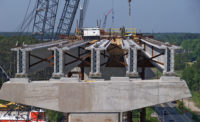Elon Musk, well known as the founder of PayPal, Tesla Motors and SpaceX, is now also well known for his recent Hyperloop Alpha Proposal outlining what he calls a “fifth mode of transportation.” But is this fifth mode of transportation feasible from an engineering and construction view, and how can engineers improve upon it?
The hyperloop is like a muted, trackless version of a vactrain—a system to propel a vehicle along a maglev track inside a vacuum tube. Proponents claim the hyperloop could reach speeds of thousands of kilometers per hour. Similar vactrain and maglev ideas have been circulated and researched for years and touted by the likes of the RAND Corp. and ET3, a Colorado-based tube-transportation consortium. Musk gives a nod to each in his proposal. There are similarities between the hyperloop and the vactrain, the biggest being that neither has been tested at full scale.
But there are significant differences, too. For example, the hyperloop has no rail or maglev component; instead, it is a free-floating passenger capsule using air-bearing skis for suspension and a compressor in its nose to cut down wind resistence. According to Musks’s proposal, the Los Angeles-to-San Francisco hyperloop is designed to be shot down a low-pressure tube and to bank when making curves. Power is gained through solar panels mounted atop the tube. Capsules would be propelled intermittently along the route, reaching top speeds of 760 mph and making the 380-mile trip in just over 30 minutes.
With all its sci-fi physics and capabilities, the hyperloop proposal manages to clock in at one tenth the price and five times the speed of the California high-speed-rail line currently under construction.
Thought Catalyst
“He’s proposing a whole new technology and a slightly different route and [differently] sized trains and more frequent service,” says William Ibbs, professor of civil and environmental engineering, University of California-Berkeley. “The engineering is quite intriguing,” he says, adding that it is important to challenge the assumptions and framework used in the American transportation industry.
Musk says it was his frustration with California's transportation that spurred the hyperloop idea. “When the California ‘high speed’ rail was approved, I was quite disappointed,” says Musk in his proposal. He is not alone.
“When it comes to high-speed transportation, we have this total disconnect between what’s real and what isn’t,” says Kevin Coates, a U.S. transportation and energy policy consultant and CEO of the North American Maglev Transport Institute. “Our fastest ground transportation system, Acella, reaches 150 mph and then slows to a crawl.”
Coates says it is important to begin to question projects like California’s rail line, which is being engineered for speeds of up to 180 mph. Coates points to the maglev trains that run more than 300 mph in Japan, Germany and China. He asks why America ignores this proven technology, which goes faster than California's line and promises a longer life cycle while saving millions in maintenance costs?
Many media sources offer commentary from professors about the impossibility of the hyperloop. One of those same sources told ENR off the record that “the idea of building a $68-billion rail line that takes 25 to 30 years to complete is just as absurd.”
Other media critique Musk for being only an idea man who is hiding behind his massive business responsibilities and not moving toward implementation of the hyperloop. Musk admits as much in his proposal and, noting that the hyperloop idea is not complete, asks for help from “all members of the community.”
Some engineers have responded with ideas on how to improve the structure or decrease construction costs.
“Just the substructure costs alone for elevated structure over the entire length of the alignment is enormous,” says Ted Zoli, national bridge chief engineer at HNTB. The hyperloop’s proposed design requires elevated piers every 100 ft. Zoli says if the structure was built instead at grade, the construction costs could be “sharply reduced.” He adds that it conceivably could be built at grade for much of the route, “particularly if it is in the median of I-5,” which is where Musk envisions much of the transit tube being placed.










